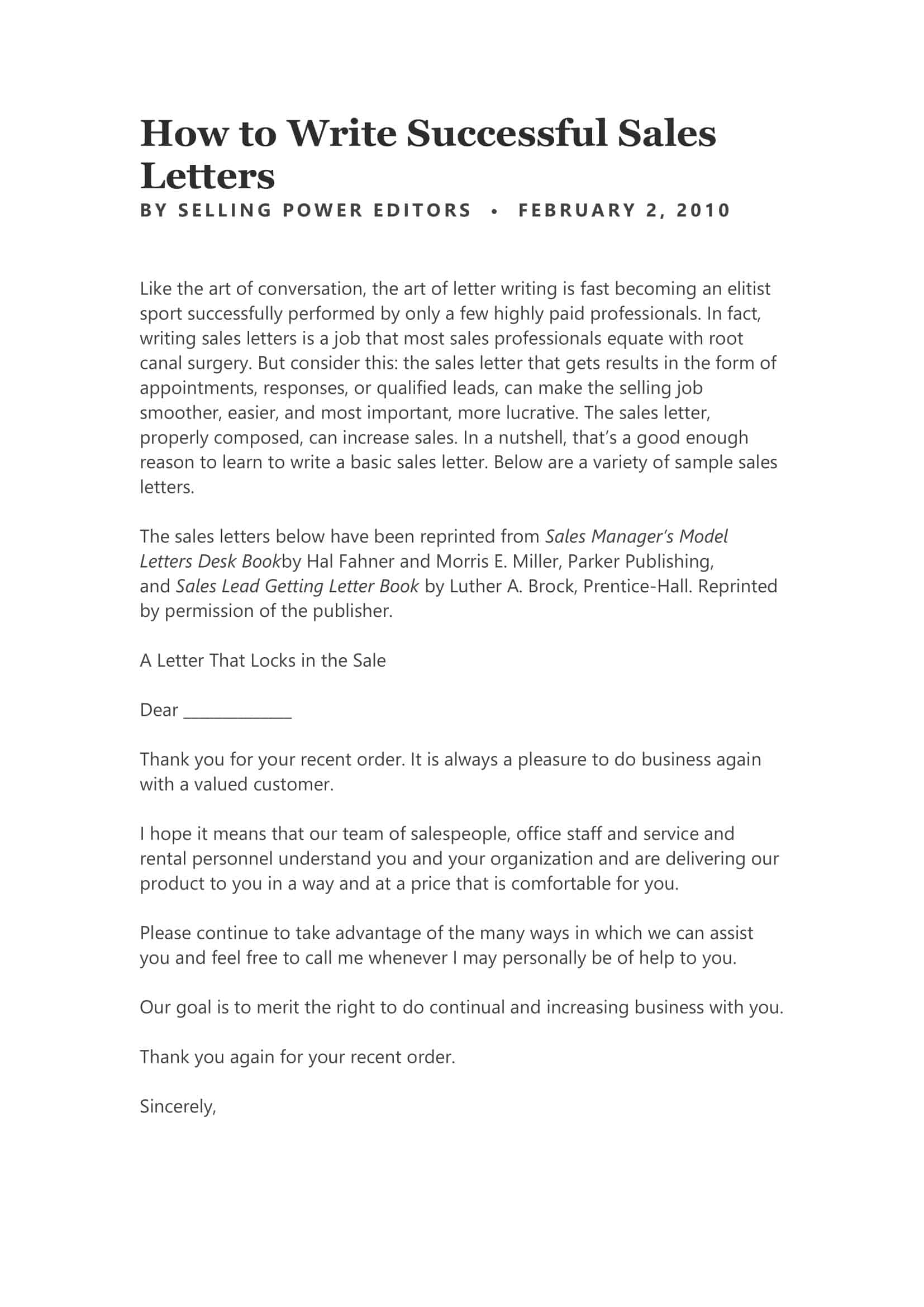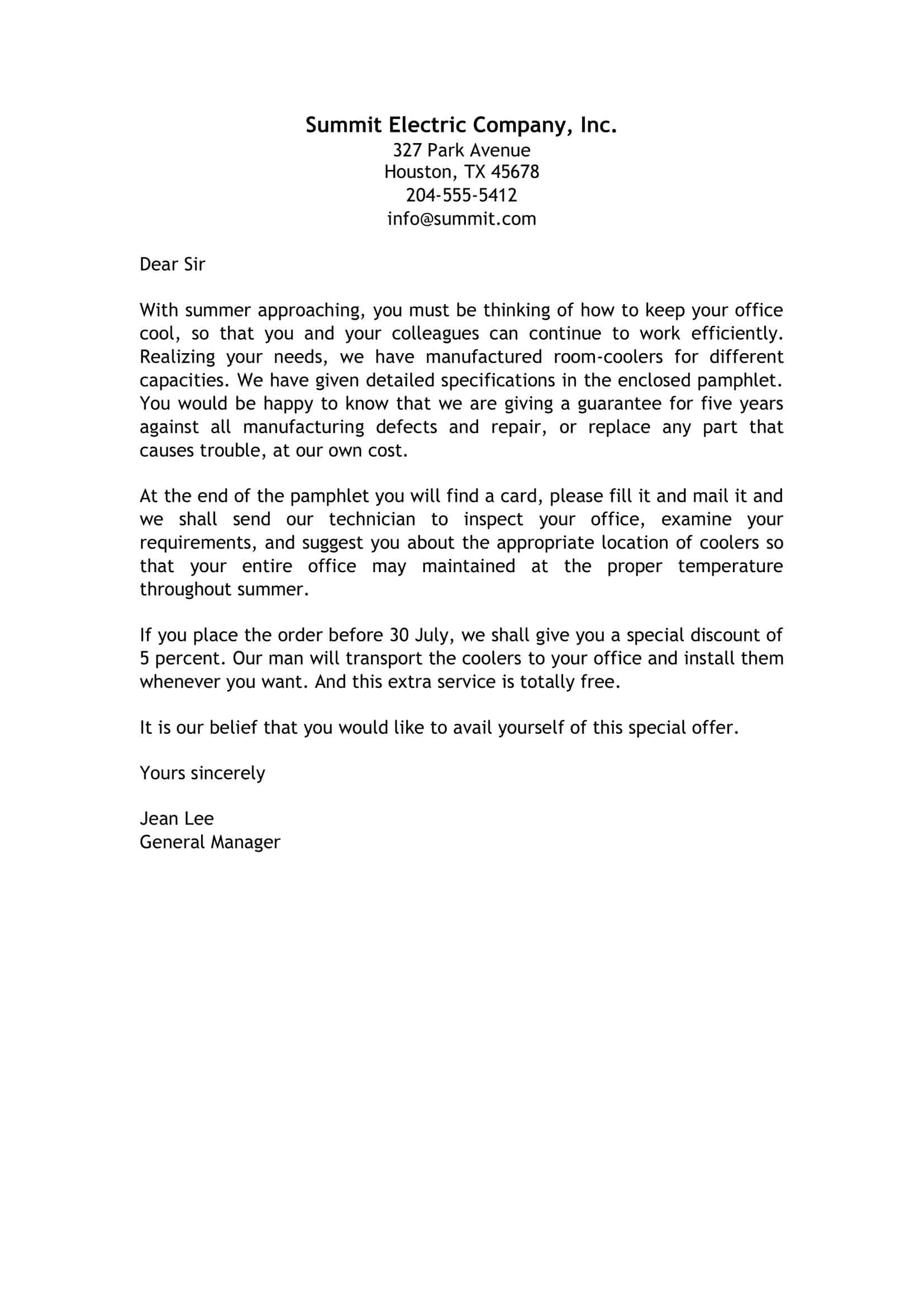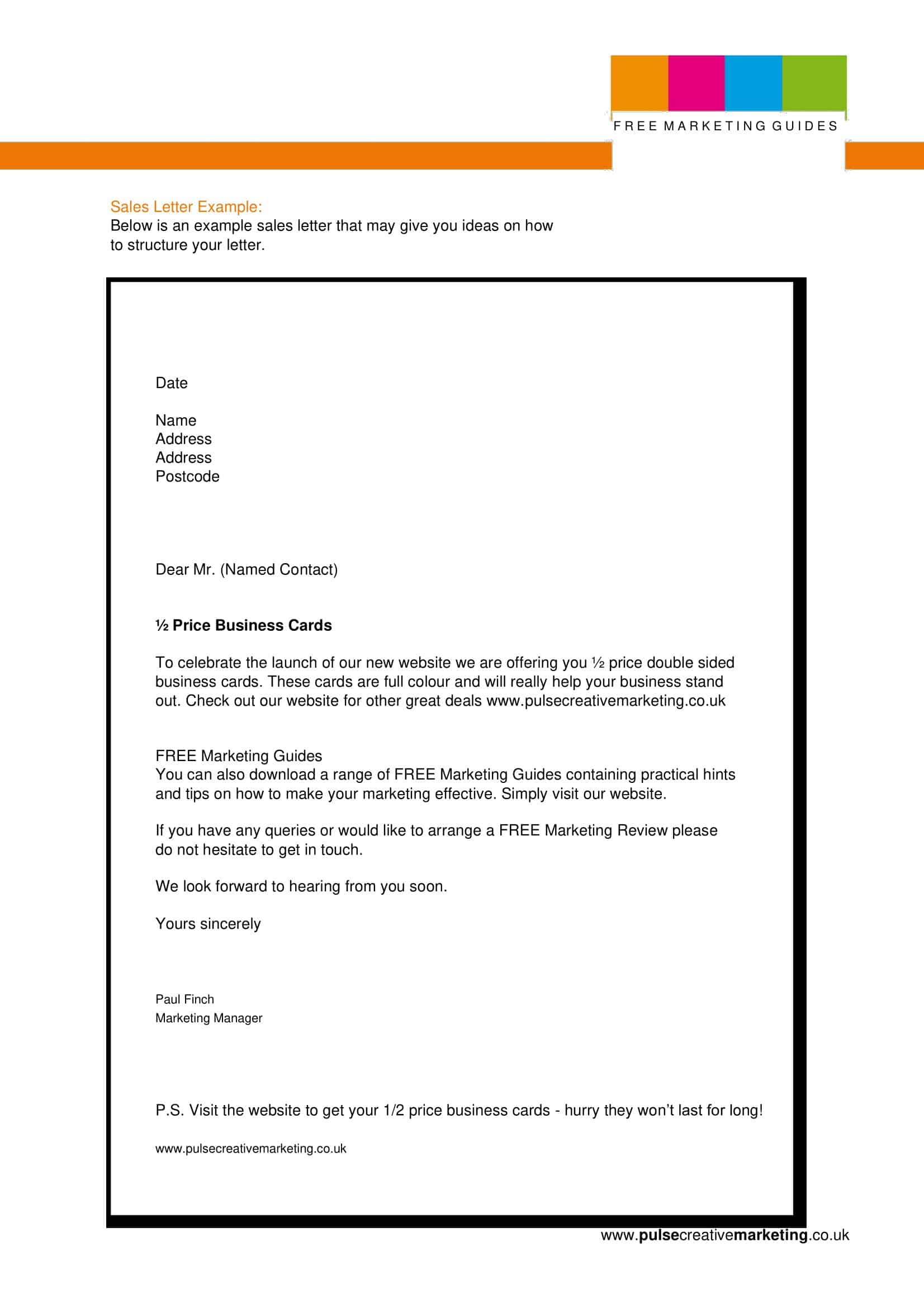Welcome to the exciting world of sales letters! Whether you’re a seasoned marketer or just starting out, creating a sales letter can be a powerful tool in driving conversions and boosting your business. With the right approach and attention to detail, a sales letter can be a persuasive and effective way to communicate with your target audience and make a strong impression. In this article, we’ll dive into the essentials of crafting a top-notch sales letter and explore some best practices to help you succeed.
Table of Contents
What is a sales letter?

A sales letter is a written piece of communication used in direct marketing to persuade a potential customer to buy a product or service. It is typically delivered via mail, email, or online and is designed to generate sales by appealing to the recipient’s emotions, needs, or interests.
A well-crafted sales letter highlights the benefits of the product or service, addresses potential objections, and includes a clear call to action. Its purpose is to generate a response from the reader and ultimately drive sales.
Sales Letter Templates
Sales Letter Templates are pre-designed formats used by businesses and sales professionals to create persuasive and compelling letters aimed at promoting products or services to potential customers or clients. These templates provide a structured framework for crafting impactful sales messages, allowing businesses to effectively communicate their value proposition, generate interest, and drive sales. Sales Letter Templates ensure consistency, professionalism, and clarity in conveying sales pitches, maximizing the chances of capturing the attention and interest of the target audience.
Sales Letter Templates provide a structured and persuasive approach to promoting products or services to potential customers. By using these templates, businesses and sales professionals can effectively communicate their value proposition, engage their target audience, and drive sales. These templates facilitate consistency, clarity, and professionalism in conveying sales messages, allowing businesses to maximize their marketing efforts and generate favorable responses from customers. Sales Letter Templates serve as valuable tools in sales and marketing campaigns, helping businesses capture attention, build interest, and ultimately convert leads into satisfied customers.
What are sales letters used for?
Sales letters are used for a variety of purposes in direct marketing, including:
Introducing a new product or service: A sales letter can be used to introduce a new product or service to the market and explain its features and benefits to the target audience.
Offering special promotions or discounts: A sales letter can be used to offer special promotions, discounts, or other incentives to encourage the recipient to make a purchase.
Building brand awareness and credibility: A sales letter can be used to build brand awareness and credibility by highlighting the company’s history, values, and expertise in its industry.
Generating leads or sales: The primary purpose of a sales letter is to generate leads or sales. A well-crafted letter should clearly explain the product or service, address potential objections, and include a clear call to action.
Upselling existing customers: A sales letter can be used to upsell existing customers by offering them additional products or services related to their previous purchases.
Providing customer testimonials and endorsements: A sales letter can be used to provide customer testimonials and endorsements to reinforce the benefits of the product or service and build trust with the target audience.
Building customer loyalty and repeat business: A sales letter can be used to build customer loyalty and encourage repeat business by offering special promotions, discounts, or other incentives to repeat customers.
Advantages of A Sales Letter
Here are some advantages of using a sales letter:
Direct Communication: Sales letters allow for direct communication with the target audience, which can be more personal and effective than other forms of advertising.
Cost-Effective: Sales letters are relatively inexpensive to produce and distribute, making them a cost-effective way to reach a large audience.
Measurable Results: Sales letters can be tracked and measured, allowing businesses to determine their effectiveness and adjust their strategy accordingly.
Targeted Marketing: Sales letters can be targeted to specific demographics or customer segments, increasing the chances of generating a response.
Builds Credibility: By highlighting the company’s history, values, and expertise in its industry, a sales letter can help build credibility and trust with the target audience.
Creates Urgency: By offering limited-time promotions or discounts, a sales letter can create a sense of urgency that motivates the reader to take action.
Standout from the Crowd: Sales letters offer a unique format for delivering marketing messages, which can help a business stand out from the competition and capture the reader’s attention.
Builds Relationships: Sales letters offer an opportunity to build relationships with the target audience by providing valuable information and addressing their needs and interests.
Customizable: Sales letters can be customized to fit the specific needs and preferences of the target audience, making them more effective in generating a response.
Versatile: Sales letters can be used for a variety of purposes, including introducing new products, promoting special offers, upselling existing customers, and more.
Long-Term Impact: Unlike other forms of advertising, sales letters can have a long-term impact on the target audience by creating a lasting impression and building trust and credibility.
High Response Rates: When done well, sales letters have been shown to have high response rates, making them an effective way to reach a large audience and generate conversions.
By leveraging these advantages, businesses can use sales letters as a powerful tool in their direct marketing arsenal and achieve their sales and marketing goals.
What are the key elements of a sales letter?
The key components of a sales letter include:
Headline: A headline that captures the reader’s attention and clearly states the main benefit of the product or service.
Opening: An opening that quickly engages the reader and sets the tone for the rest of the letter.
Benefits: A clear and concise explanation of the benefits of the product or service, highlighting what sets it apart from the competition.
Objections: An acknowledgement and response to potential objections the reader may have, addressing any concerns and reinforcing the benefits of the product or service.
Call to action: A clear and compelling call to action that motivates the reader to take action, whether it’s to buy the product, request more information, or visit a website.
Closing: A closing that ties together the key elements of the letter and leaves a lasting impression on the reader.
Postscript (P.S.): A postscript that reinforces the main benefit of the product or service and provides a final call to action.
In addition to these key components, a successful sales letter should also be well-designed, easy to read, and tailored to the target audience. By including these elements and focusing on the reader’s needs and interests, a sales letter can be an effective tool in driving conversions and boosting sales.
How to write a sales letter
Writing a sales letter can seem intimidating, but with the right approach, it can be a powerful tool for generating leads and boosting sales. Here are the steps for writing a successful sales letter:
Identify your target audience
Start by identifying your target audience, including their needs, interests, and pain points. This will help you tailor your letter to their specific requirements and increase the chances of generating a response.
Define your goal
Next, define your goal for the letter. This could be to introduce a new product, promote a special offer, upsell an existing customer, or something else. Having a clear goal will help you stay focused and write a more effective letter.
Create a headline
Your headline is the first thing the reader will see, so it’s important to make it attention-grabbing and compelling. Your headline should clearly state the main benefit of the product or service and grab the reader’s attention.
Write an opening
In the opening, quickly engage the reader and set the tone for the rest of the letter. Start by introducing yourself and the company, and provide some context for why you’re writing.
Explain the benefits
The body of your letter should clearly explain the benefits of the product or service, highlighting what sets it apart from the competition. Focus on the reader’s needs and interests, and explain how the product or service will address their pain points.
Address objections
Acknowledge and respond to potential objections the reader may have. Address any concerns the reader may have about the product or service and reinforce the benefits.
Include a call to action
End the letter with a clear and compelling call to action that motivates the reader to take action, whether it’s to buy the product, request more information, or visit a website.
Write a closing
In the closing, tie together the key elements of the letter and leave a lasting impression on the reader. Thank the reader for their time and express appreciation for their interest in the product or service.
Add a postscript (P.S.)
A postscript can be a powerful tool in reinforcing the main benefit of the product or service and providing a final call to action.
Proofread and edit
Before sending your letter, proofread and edit it carefully to ensure that it’s well-written, error-free, and easy to read.
Sales Letter Example
Here is a sample of a sales letter:
Dear [Name],
Are you tired of feeling overwhelmed and stressed at work? Do you wish you could find a solution that would help you stay organized and on top of your tasks?
I’m writing to introduce you to [product name], the innovative new tool that can help you streamline your work and increase your productivity. Our product offers a range of features designed to make your work easier, including [list key features].
With [product name], you’ll no longer have to struggle with disorganized files and cluttered inboxes. Our product is designed to simplify your work and help you get more done in less time.
But don’t just take our word for it. Here’s what one satisfied customer had to say:
“Since using [product name], I’ve been able to stay on top of my tasks and feel more organized than ever before. I highly recommend this product to anyone looking to increase their productivity.” – [Customer Name]
So why wait? Try [product name] today and start experiencing the benefits for yourself. For a limited time,we’re offering a special discount of [insert percentage or amount] off your purchase.
To take advantage of this offer, simply visit [website or phone number] and place your order now. Our friendly customer service team is available to answer any questions and assist you with your purchase.
Don’t let work stress and disorganization hold you back any longer. Invest in [product name] today and take control of your productivity.
Thank you for considering [product name]. We look forward to the opportunity to serve you and help you achieve your work goals.
Sincerely,
[Your Name]
FAQs
Why are sales letters important?
Sales letters are important because they provide a way for businesses to reach potential customers directly and to communicate the benefits of a product or service in a personal and compelling way. By carefully crafting the letter to meet the needs and interests of the reader, businesses can increase the chances of generating a response and making a sale.
Who should write a sales letter?
A sales letter can be written by anyone within a company who has a good understanding of the product or service being promoted, as well as the target audience. In some cases, a professional copywriter may be hired to write the letter.
What is the difference between a sales letter and a sales email?
A sales letter is a physical piece of marketing communication that is typically sent directly to potential customers, while a sales email is an electronic version of a sales letter that is sent via email. The key components and principles of writing a successful sales letter and sales email are the same, but the format and delivery methods may differ.
How long should a sales letter be?
The length of a sales letter can vary, but it is generally recommended to keep the letter concise and focused, around 1-2 pages. Longer letters may lose the reader’s attention and fail to achieve the desired response.
How do you measure the success of a sales letter?
The success of a sales letter can be measured by tracking the response rate, which is the number of people who take the desired action (such as making a purchase) divided by the number of letters sent. Other metrics that may be used to measure the success of a sales letter include the number of leads generated, the conversion rate, and the return on investment.





















































![Free Printable Roommate Agreement Templates [Word, PDF] 1 Roommate Agreement](https://www.typecalendar.com/wp-content/uploads/2023/06/Roommate-Agreement-150x150.jpg)
![Free Printable Credit Card Authorization Form Templates [PDF, Word, Excel] 2 Credit Card Authorization Form](https://www.typecalendar.com/wp-content/uploads/2023/06/Credit-Card-Authorization-Form-150x150.jpg)
![Free Printable Stock Ledger Templates [Excel,PDF, Word] 3 Stock Ledger](https://www.typecalendar.com/wp-content/uploads/2023/08/Stock-Ledger-150x150.jpg)
